
(English version down the page)
Dies ist ein Wiener Weinspaziergang durch einen weniger bekannten Teil der Stadt, am nördlichen Rand. Dieser Teil von Floridsdorf ist abgelegen, unerforscht, romantisch, verloren, nicht kommerziell, günstiger und weniger touristisch als andere Weinviertel. Vielleicht das echte Wien? Finden wir es heraus.
Und Bisamberg ist ein wunderschönes Wort. Dieser Spaziergang bietet besondere Ausblicke – ungewohnte – zurück über die Stadt. Es ist eine Landschaft mit sanften grünen Hügeln, Bäumen, Heurigen und nur wenigen Häusern.
80 % des Wiener Weins ist weiß, und 80 % wird in Heurigen getrunken, nicht in Restaurants oder im Supermarkt gekauft.
Wien liegt dort, wo es liegt, wegen der Römer – Vindobona. Und sie brachten eine wertvolle Kultur mit, die die Wiener angenommen und verbessert haben: den Wein. Dies ist die EINZIGE Hauptstadt der Welt mit bedeutender Weinproduktion.
Heurigen und Schrammelmusik verleihen dieser Stadt eine unverwechselbare und dunkle Kultur, die eine Atmosphäre schafft, die Besucher lieben. Die Weinstuben haben strenge Vorstellungen davon, welche Speisen zu ihrem Wein passen, dürfen nur ihre eigenen Kreationen servieren, dürfen nur zu bestimmten Zeiten öffnen und hängen einen Zweig vor ihre Bar, um zu zeigen, dass sie geöffnet haben. Wein ist ein wichtiger Teil der Geschichte und Gegenwart Wiens. Etwa 80 % des produzierten Weins sind Weißweine, wobei G'mischter Satz, eine Mischung, eine Spezialität der Stadt ist (mit dem Namen dieses Weins kann man endlos spielen, was Mash-ups und beschwipste Gespräche angeht). Aber was genau ist dieser Wein, warum ist er so besonders und warum steht er auf so wenigen Wiener Speisekarten? Die Sturmzeit ist ein besonderer Moment in unserer jährlichen Esskultur und ein Schock für Besucher, die sehen, wie die Einheimischen einen halben Liter trüben Wein trinken.
Stammersdorf Kellerg
Es scheint, dass Wiener Wein hauptsächlich auf schönen Hügeln angebaut wird, am bekanntesten sind Nussdorf und Grinzing, aber auch Ottakring, Mauer und Favoriten produzieren bedeutende Mengen. Dazu kommen Stammersdorf und Strebersdorf, wie wir noch entdecken werden.
Dieser Spaziergang erinnert daran, dass Wien eine sehr grüne Stadt ist, deren Fläche zu 49 % aus Parks, Gärten, Wäldern oder Flüssen besteht. 13 % des Stadtgebiets sind landwirtschaftlich genutzt, und diese Stadt produziert mehr Lebensmittel pro km² als jede andere Bundesregion Österreichs. Um zu verstehen, wie wichtig Wein für die Identität Wiens ist, denken Sie nur an eine Stadt, die seit 24 Jahren denselben Bürgermeister hat – der immer wiedergewählt wird – und doch machen viele Menschen, wenn sein Name fällt, einen Witz über einen Spritzer. Er wurde kürzlich an der Niere operiert. In diesem Vierteljahrhundert hat sich Wien zur lebenswertesten Stadt der Welt gewandelt. Wein und Wien sind eng miteinander verbunden.
ENGLISH
VWW: Wine Walk Bisamberg - A g'mischter Satz
This is a Vienna wine walk through a less-famous part of the city, on the northern edge. This part of Floridsdorf is off-the-map, unexplored, romantic, lost, non-commercial, less-expensive and less-touristy than other wine districts. Maybe the real Wien? Let’s find out.
And Bisamberg is a beautiful word. This walk offers special views – unfamiliar ones – back across the city. It is a landscape of rolling green hills, trees, Heurigen and very few houses.
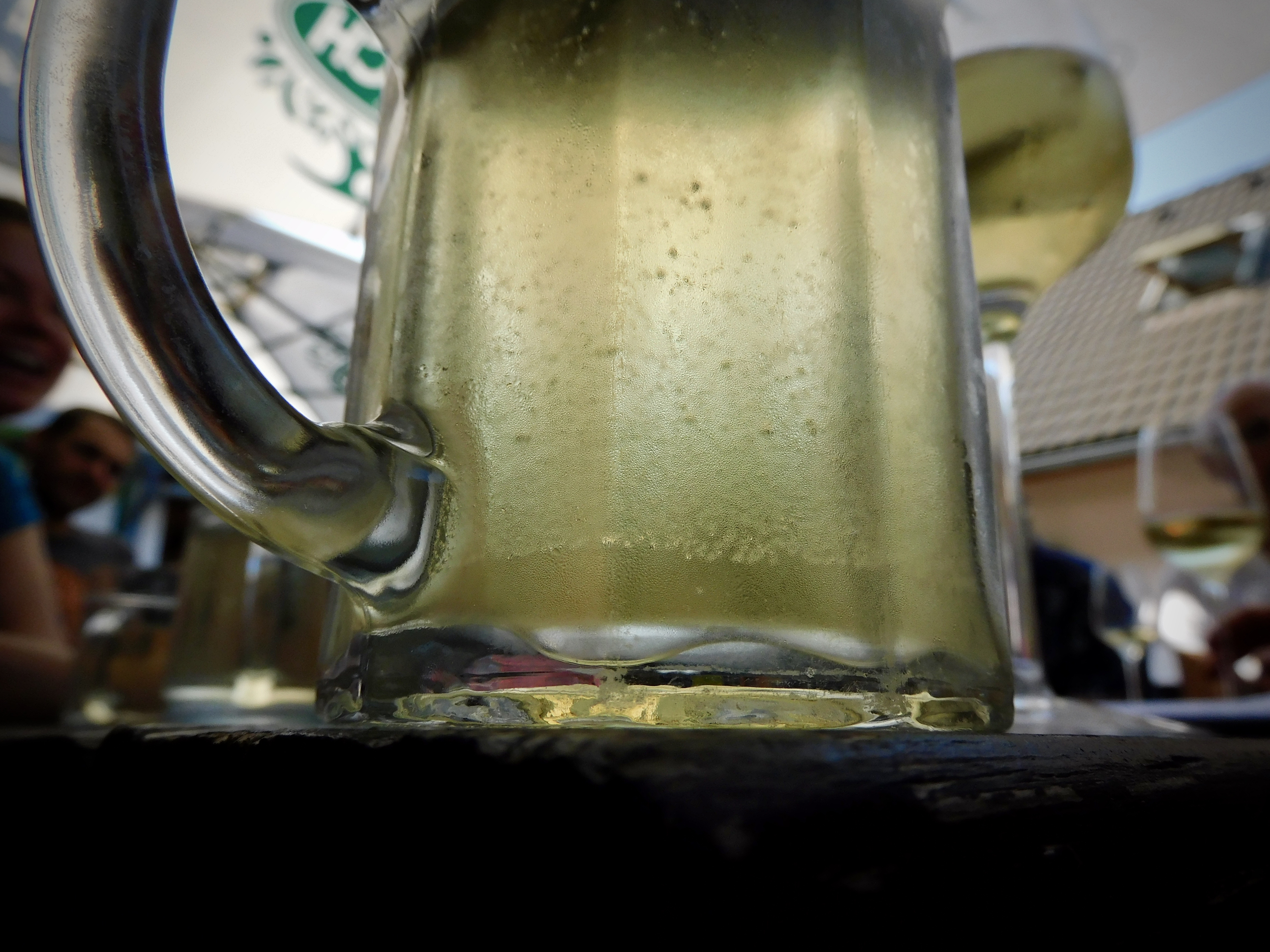
Vienna is located where it is, because of the Romans – Vindobona. And they brought with them a valuable culture which the Viennese have embraced, and improved: wine. This is the ONLY capital city in the world with significant wine production.
Heurigen and Schrammelmusik give this city a distinctive and dark culture which add atmosphere that visitors love. The wine taverns have a strict idea of which food to accompany their wine, can only serve their own creations, they can only open in certain periods, and hang a branch outside their bar to show they are serving. Wine is a rich part of Vienna’s history, and present. Around 80% of the wine produced is white, with G’mischter Satz, a blend, being a variety the city specialises in (the name of this wine can be endlessly played with, in terms of mash-ups and tipsy conversations). But what exactly is this wine, why is it so special, and why does it feature on so few Vienna restaurant lists? Sturmzeit is a distinctive moment in our annual culinary culture, and a shock to visitors, seeing locals drinking half litres of cloudy wine.
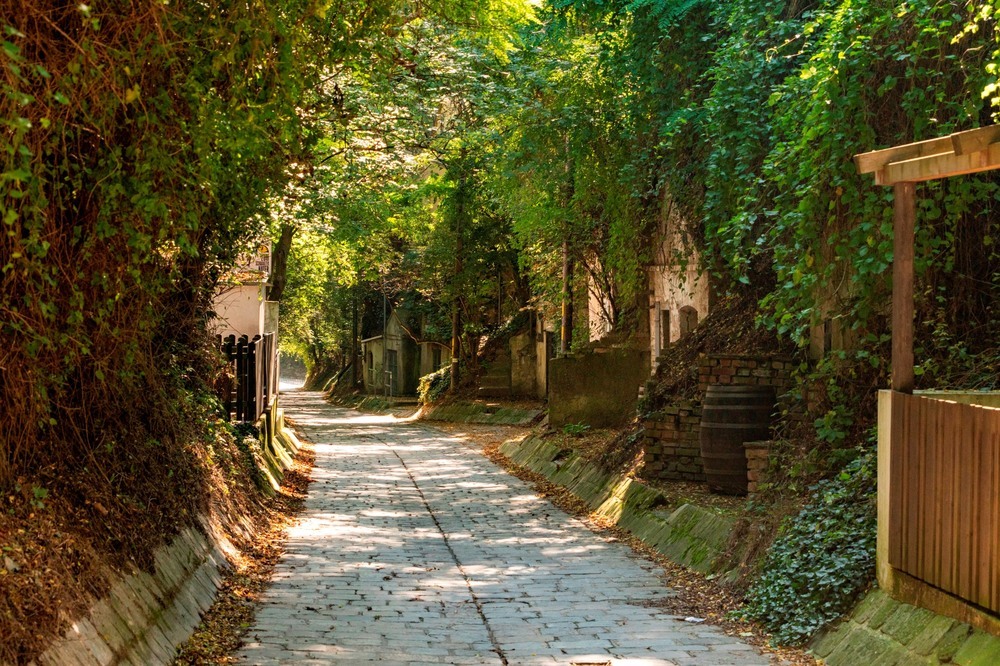
It seems Vienna wine is mainly grown on lovely rolling hills, most famously Nussdorf and Grinzing, but Ottakring, Mauer and Favoriten also produce significant quantities. Plus Stammersdorf and Strebersdorf, as we will discover.
This walk is a reminder that Vienna is a very green city, with 49% of its area being parks, gardens, forests or rivers. 13% of its territory is agricultural, and this city produces more food per km2 than any other federal region of Austria. To understand how central wine is to Vienna identity, just think about a city with the same mayor for 24 years – continually re-elected - and yet for many people, whenever his name is mentioned, they will make a joke about a Spritzer. He recently had surgery on his kidney. In that quarter century, Vienna transformed itself to become the best city in the world to live. Wine and Wien are intimately connected.
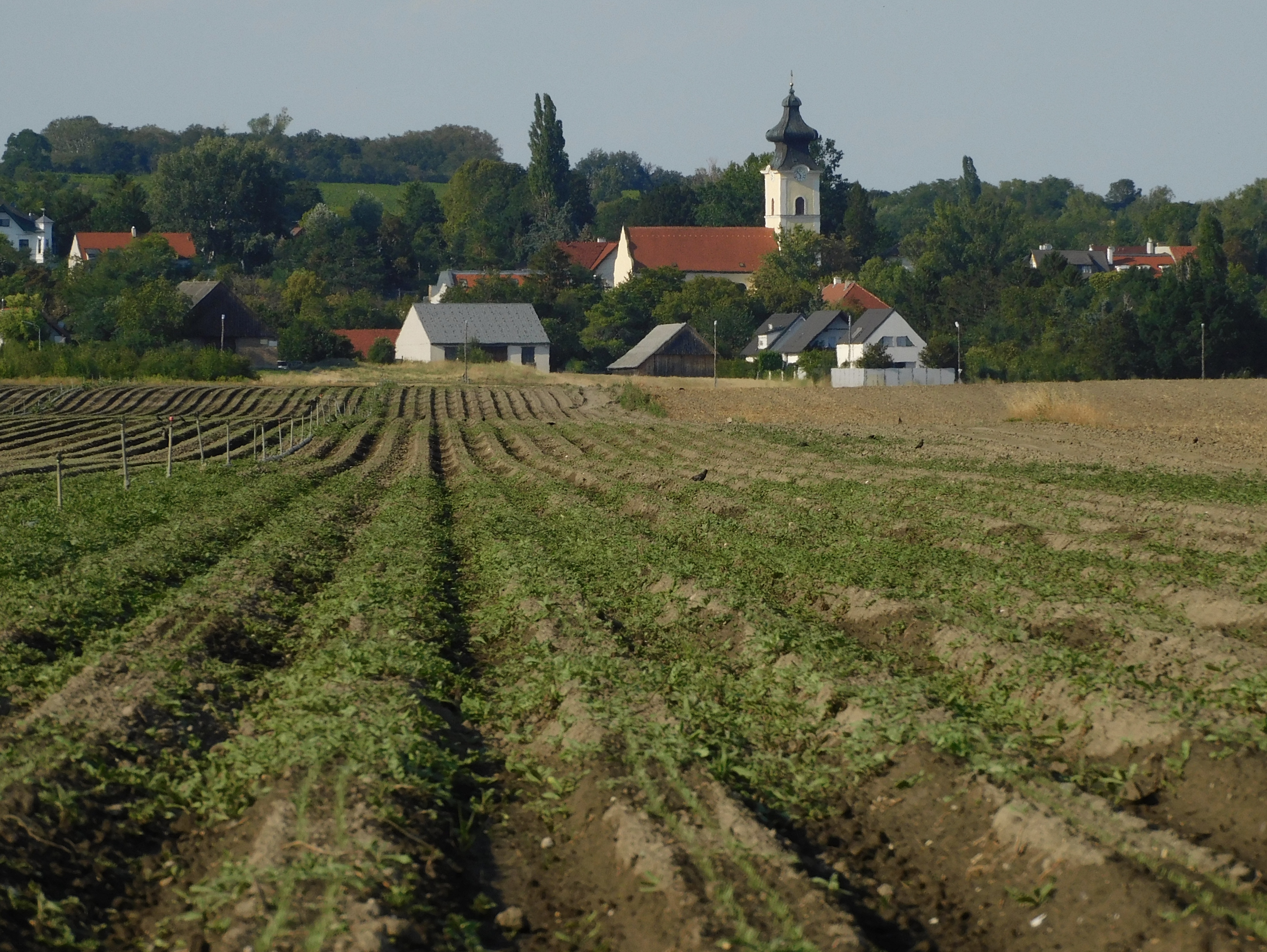
And this is a proper walk, so please bring good shoes for a longer trek. For Whoosh, the walking is more important than the drinking.
Vienna is never less than half full. That means that even in August or December, there are plenty of people available to attend any event. And yet the city schedule is focused on big social events in June and September, with little to entertain the population in the hot summer months. People’s diaries are full in June, and empty in July. But Whoosh loves cool Summer moments like Calle Libre (world street art fest, Aug), Popfest (Jul), Afrikatage (Aug) and Impulstanz (Jul/Aug). We hope our event can join these landmark summer moments as a distinctive part of each summer in Wien. You don't need to travel to experience the joyous, colourful and distinctive.
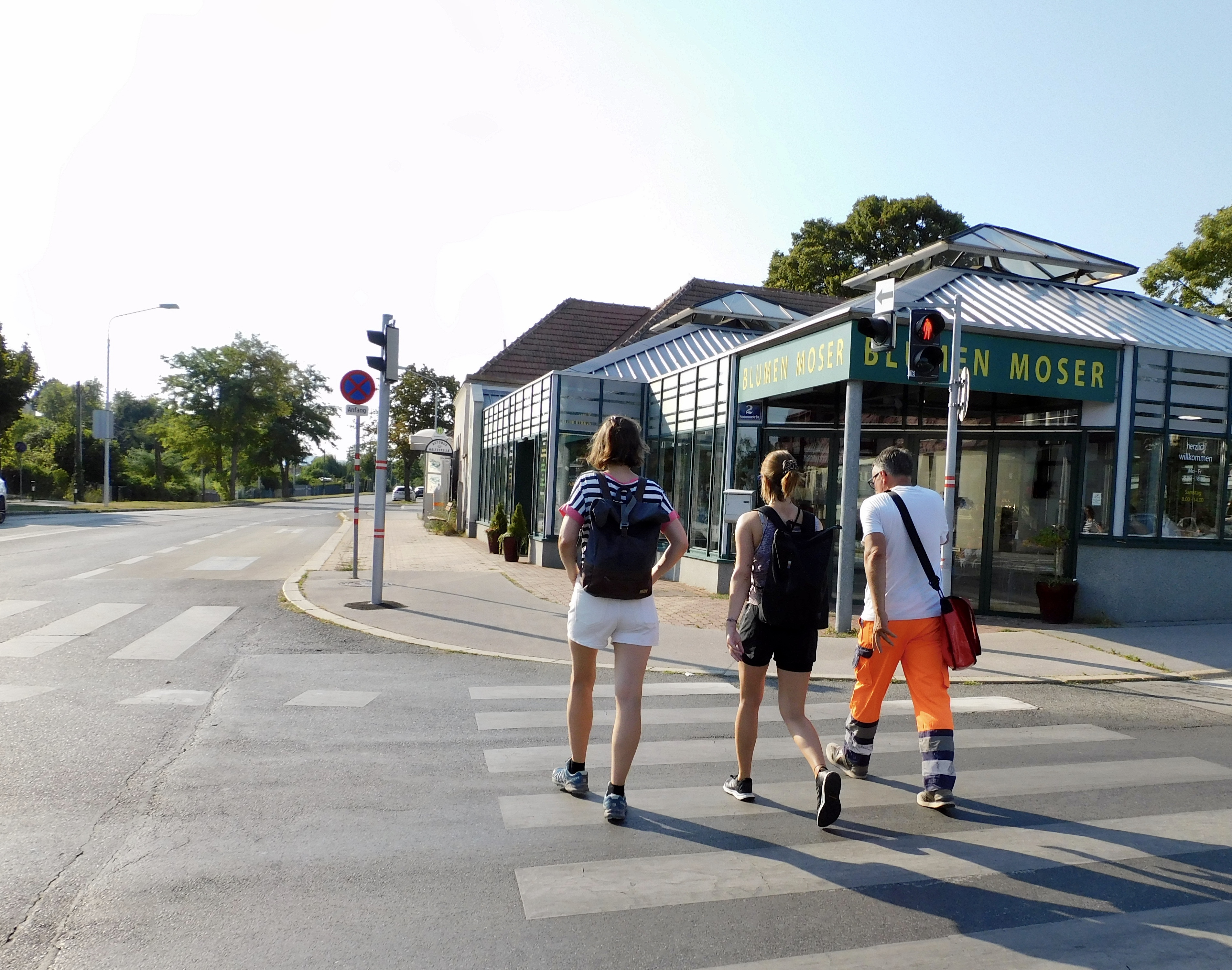
How has Vienna’s relationship with wine evolved? The 1985 antifreeze-in-wine discovery was a turning point, pushing makers into much higher standards. It is a sweet irony that Austria has become a leader of European organic farming today, largely because of the public backlash to that scandal, in which cheeky winemakers used diethylene glycol (antifreeze) instead of a natural glucose sweetener on their grapes, to cut costs. And even better, the scandal emerged when an Austrian producer tried to claim a tax rebate on the stuff he’d been blending into his wines.
Descriptions of wine can be both poetic and ridiculous. We will discuss a few favourites from the British press on our walk: vigorous, cheeky, sensuous, racy, feminine, rugged yet dainty, farmyard, goaty, seductive, depth, curious, complex, rounded, bright, wow factor, whoosh, full-on, Brad Pitt sort of vintage, oomph, a slight hum in the mouth.
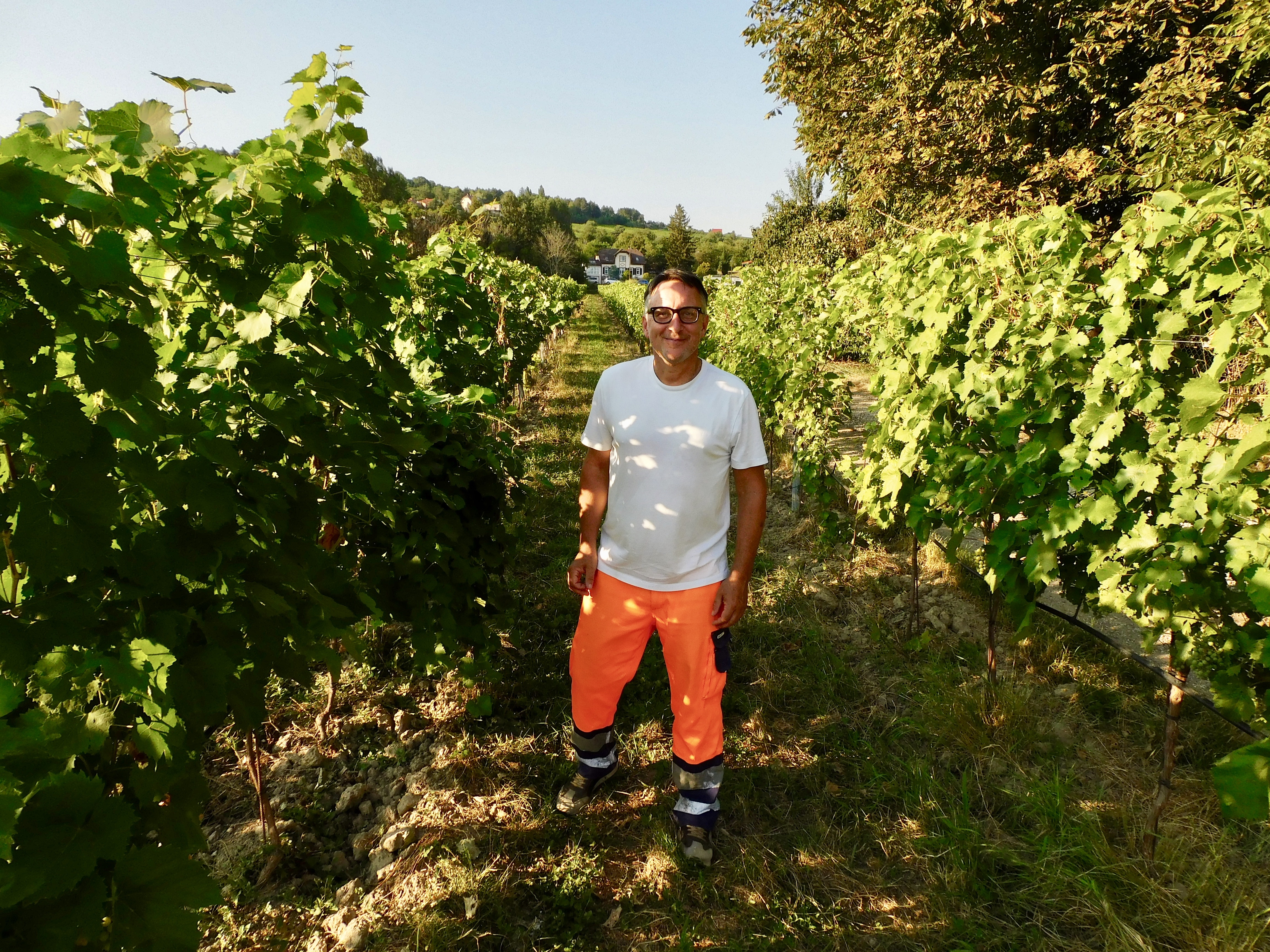
Take lovely tram ride 31 to meet us. Euge will be on it, from his Grätzl, Karmeliterviertel right up there, if you want to join him on the ride, leaving Schottenring at 15:55.
He promises to drink a glass in every Heurigen, so you may hear some songs by the end! It will be loud. And joyous.
Singles specially welcome on this walk.
This tour is a part of Vienna Walking Week, 17 events designed to show you it is not necessary to leave the city to find beautiful, exotic, colourful adventures. Please join us for the whole week, 19-26 July, to meet new people, take lovely photos, try some new tastes and have some unusual stories to tell your family, neighbours and colleagues, when they ask what you did on your holidays.
Time: 4:30-9pm on 26th July - our traditional closing fest (5 hr walk – but you can join later, or leave earlier, if that is too much). Just call Eugene on 0680 1254354 to find out where we are. We walk in every weather.
MEETING PLACE: Amts Strasse 28, 1210, 6 minutes walk from Grossjedlersdorf stop on Tram 31 (catch this from either U4 Schottenring (a 32min ride) or U6/S Floridsdorf)
Cost contribution: €10, or €50 for all 17 walks. Children 14 or under go free. No reservation is possible – just get a card on the day. No tour is ever sold out, so don’t worry about not getting a place on the walk. You pay for your own wine.
Wine Expert: Eugene Quinn
Language: in English and German
Fidelia
Gartner (TU Wien Raumplanung/ISRA) and Lisa Fuchs (Max Planck
Institute) finely translated these pages into German, added ideas, and
helped select the images. Thanks to them for their valuable input.
Wir freuen uns sehr über die finanzielle Unterstützung der Wirtschaftsagentur Wien und über die Förderung von Wien Tourismus, der Mobilitätsagentur und diversen Mediengruppen (inklusiv ORF). Außerdem sind wir stolz, dass wir in die Initiative Reparatur der Zukunft aufgenommen wurden, eine Kooperation von Ö1, Forum Alpbach, Ars Electronica und Akademie der bildenden Künste Wien.